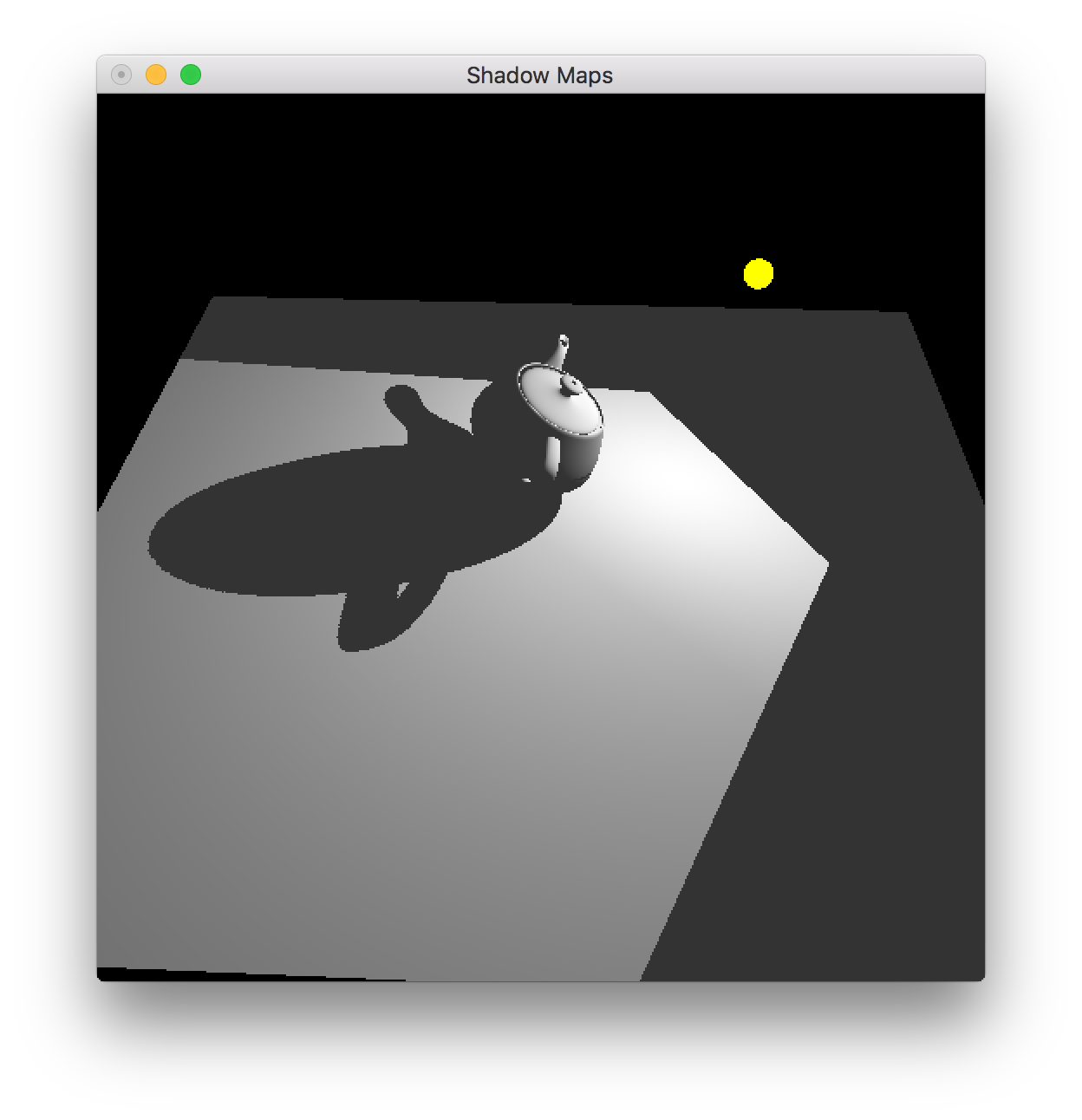CSCI 444/544 - Advanced Computer GraphicsSpring 2017 - Assignment 4 - Shadows! |
|||||||||||
| | Home | Syllabus | Assignments | Schedule | Resources | | |||||||||||
|
This assignment is due
by May 4, 2017 by 11:59pm.
Please Note: For this all future assignments, you are
free to choose which OpenGL implementation you would prefer to use.
Most of what we will be working on can be accomplished in OpenGL,
OpenGL ES, or WebGL. Additionally, you may use GLUT or GLFW for your
framework.
HOWEVER - if you choose to use a version or framework that we are not covering in class, then you must ensure your submission builds out of the box on the machines in the Computer Commons. Be sure to note any special instructions in your README. If the grader (i.e. instructor) cannot compile your code, you will be contacted once to solve the problem. Part I - Generate Some ShadowsYou may use the provided A2 solution
(GLFW Solution) to get started. For this assignment, you
have the choice to implement Shadow Maps or Shadow Volumes. Both
techniques are multipass techniques so you will need to use
Framebuffer Objects to capture the result of a prior pass. Your teapot should cast a shadow onto the ground plane.

In your README, be sure to state if
you implemented Shadow Maps or Shadow Volumes. Remember, for Shadow Volumes we need to pass in our objects
using a triangle adjacency primitive to be able to detect a silhouette edge. If you choose to implement Shadow Volumes,
then you may use a cube as your geometry. But have several cubes in the scene so they cast shadows onto each other.
Part II - Create Your WebsiteIn addition to creating this awesome
looking shadow, modify your webpage from A3 to include several
screenshots.
Documentation
With this and all future assignments, you are expeced to appropriately
document your code. This includes writing comments in your source code
- remember that your comments should explain what a piece of code is
supposed to do and why; don't just re-write what the code says in
plain English. Comments serve the dual purpose of explaining your code
to someone unfamiliar with it and assisting in debugging. If you know
what a piece of code is supposed to be doing, you can figure out where
it's going awry more easily. (Interestingly enough, this code review of Doom 3's source code says the
exact opposite - well written code should require no comments. Well,
we don't work at id so we're going to comment.)
Proper documentation also means including a README.txt file with your submission. In your submission folder, always include a file called README.txt that lists:
Grading Rubric
Your submission will be graded according to the following rubric.
Submission
Please update your project so it produces an executable with the name
userName_A4. When you are completed with the assignment, zip together
your source code, README.txt, and www/ folder. Name the zip file,
userName_A4.zip. Upload this file to Canvas under A4.
This assignment is due
by May 4, 2017 by 11:59pm.
| |||||||||||
|
Last Updated: 01/01/70 00:00
|
|||||||||||



